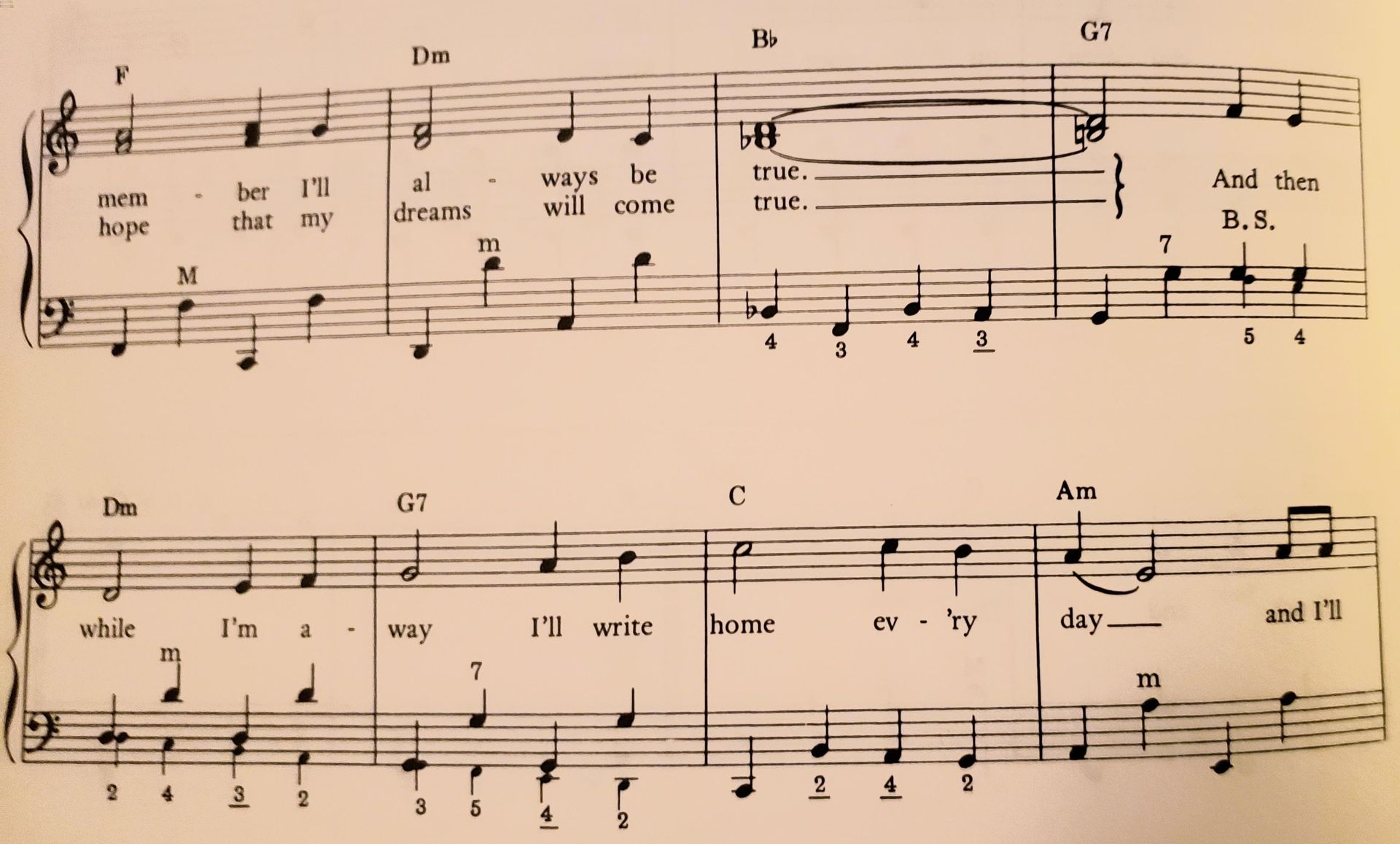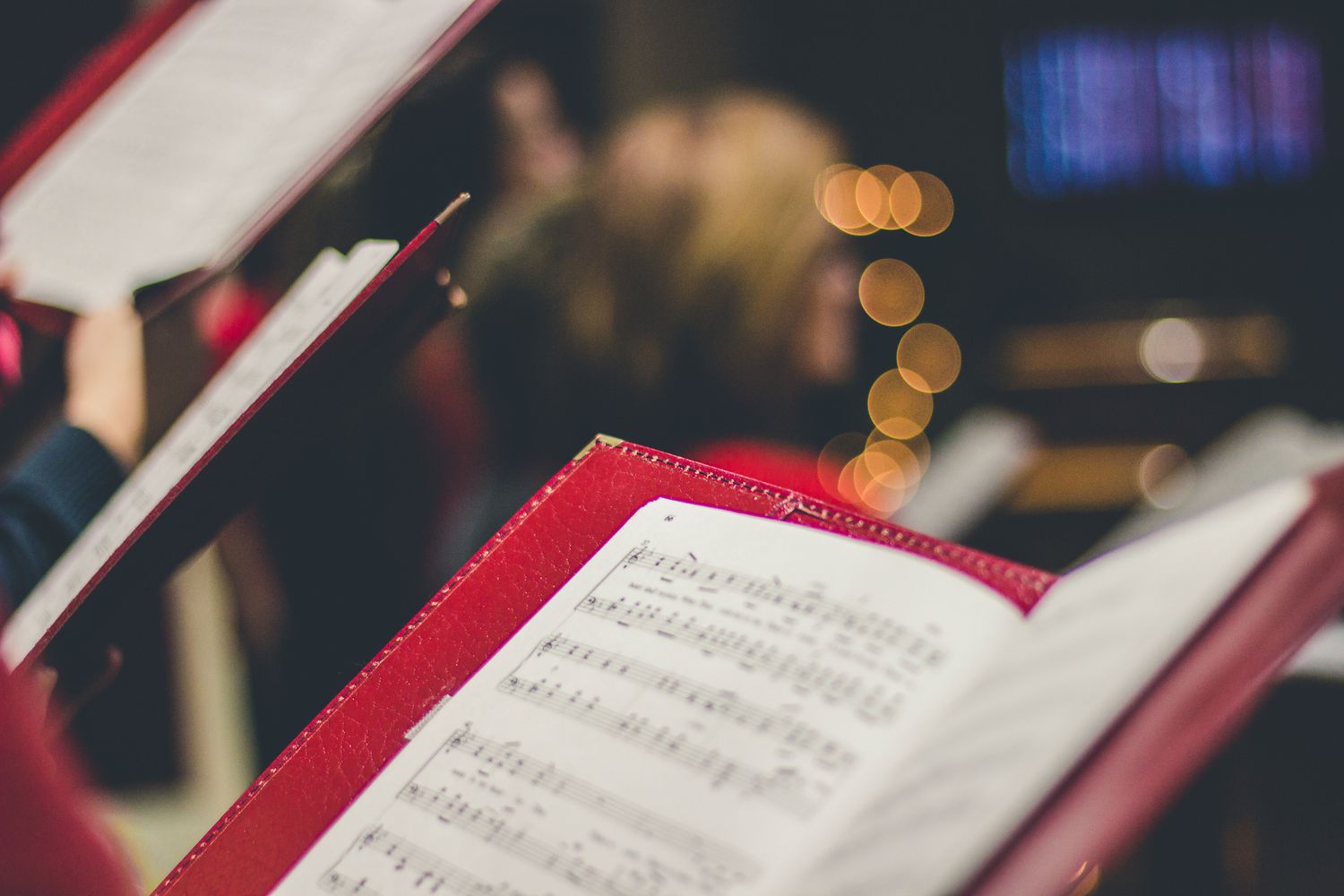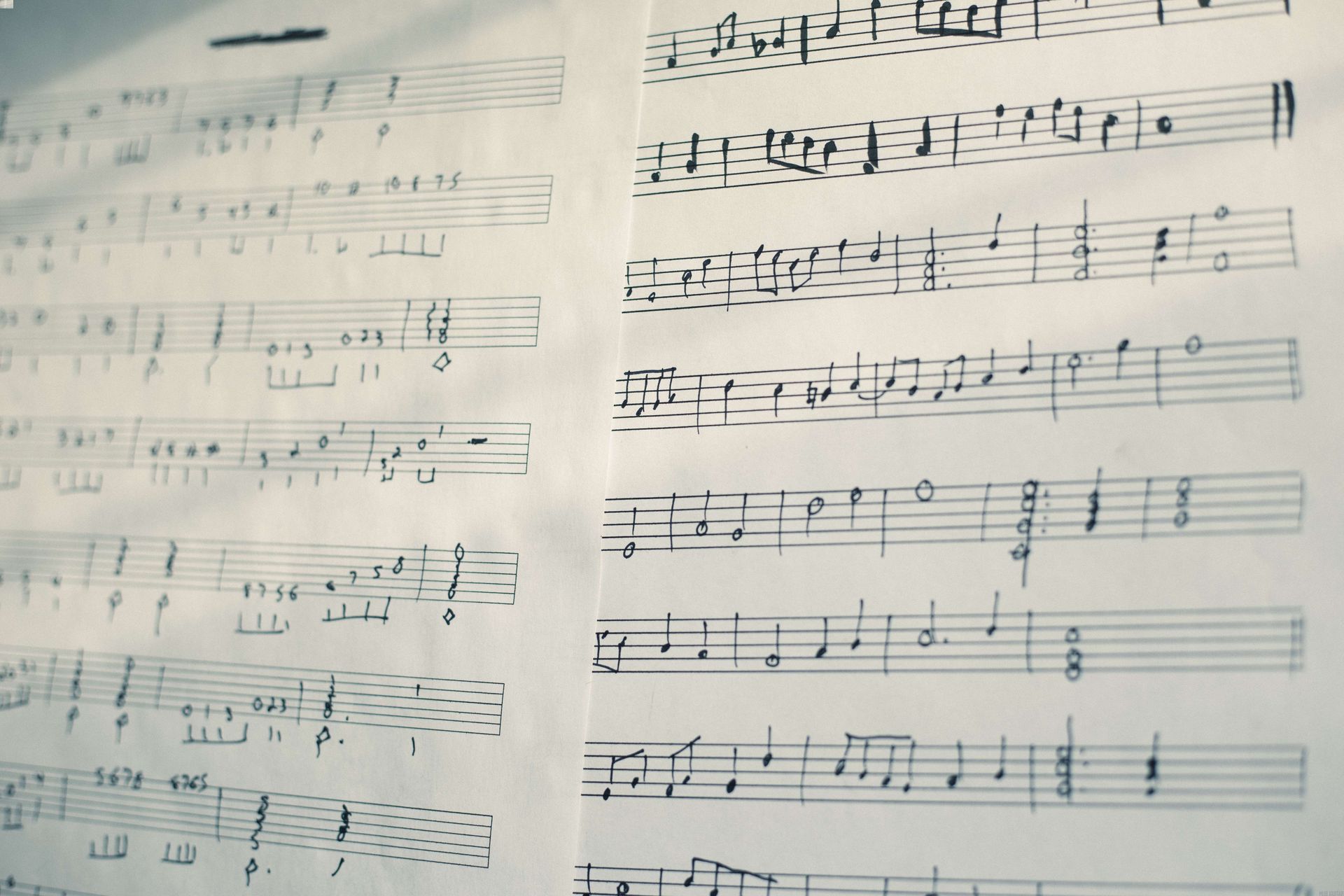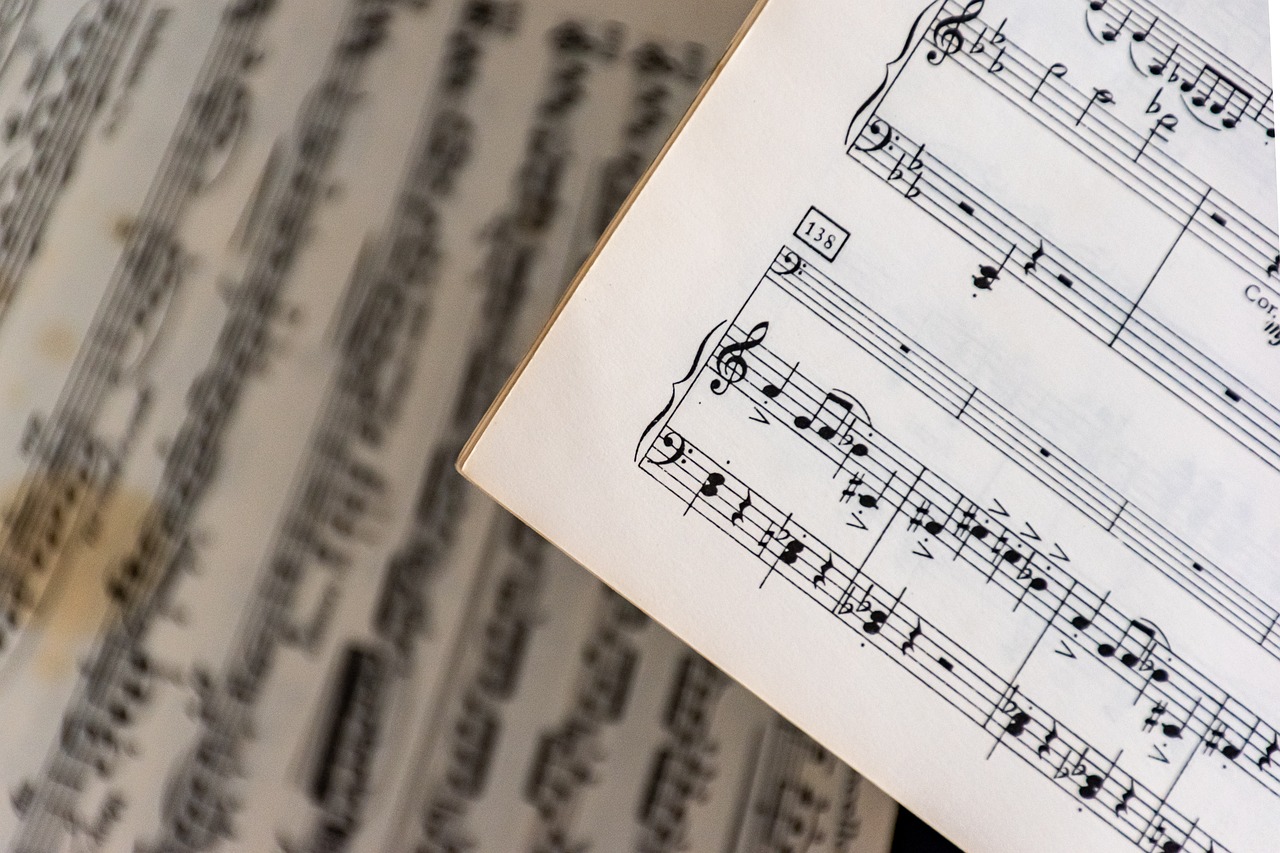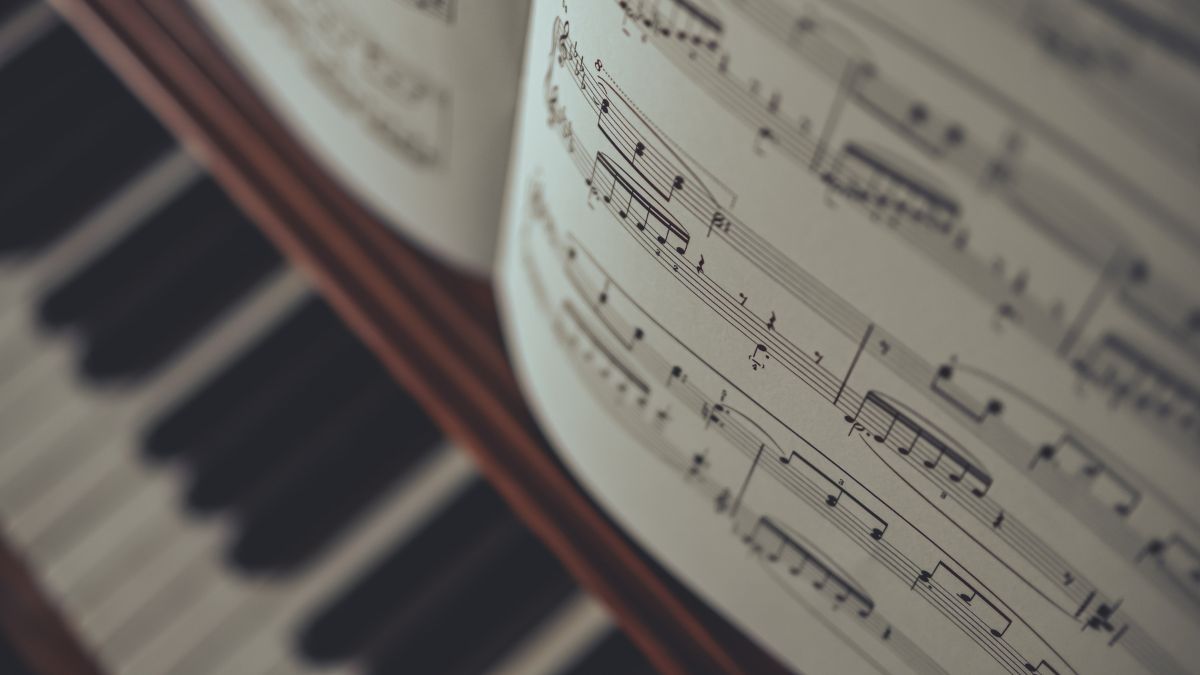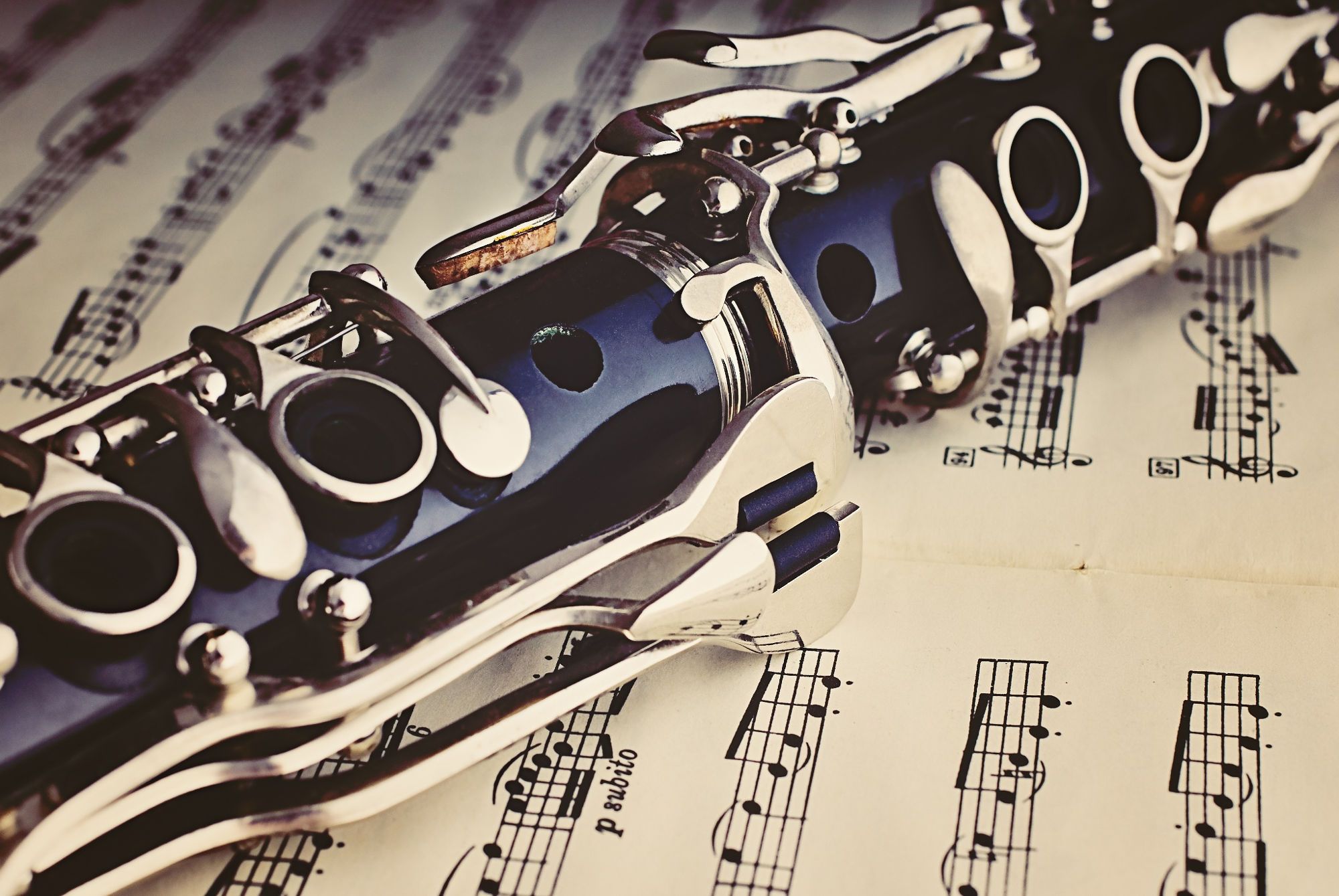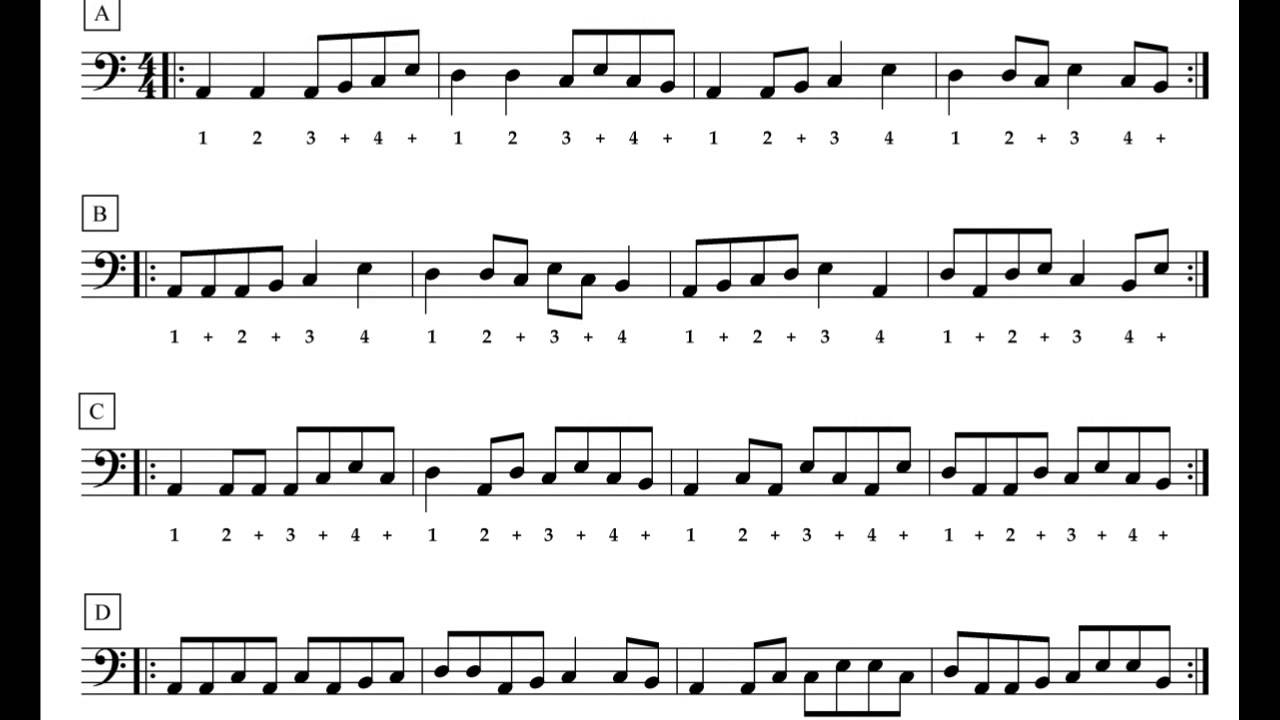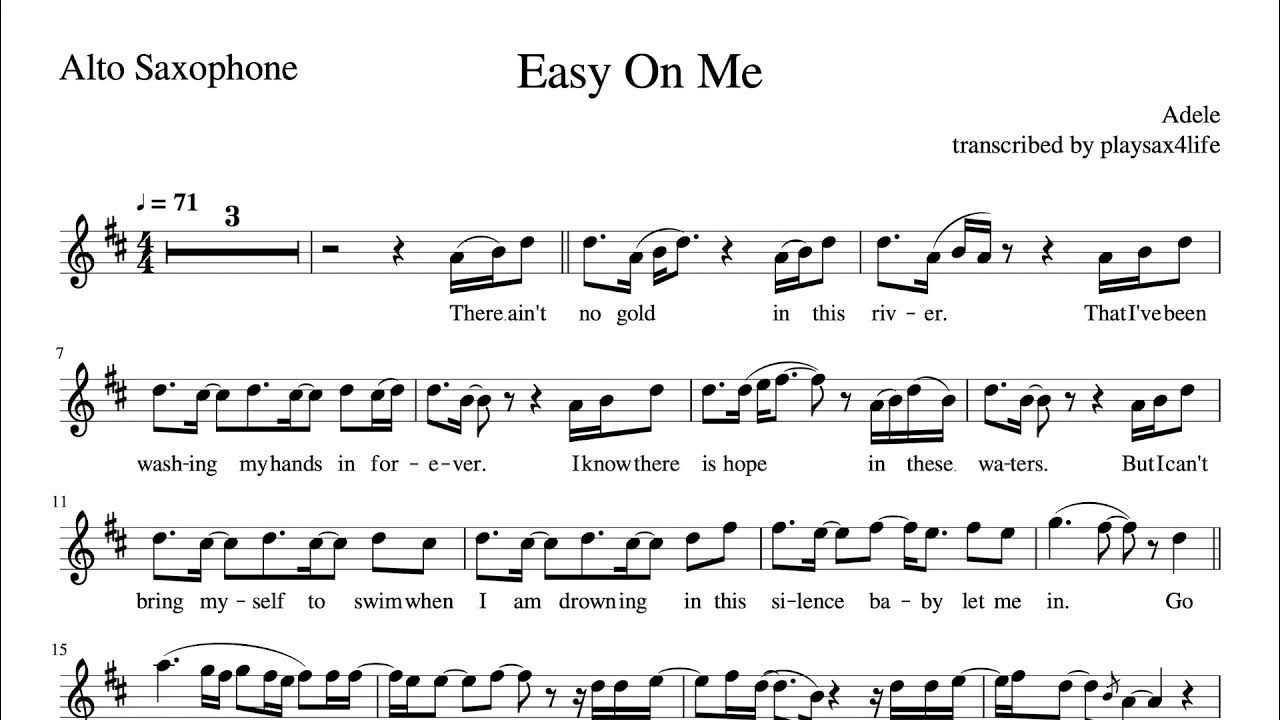Home>Production & Technology>Sheet Music>How To Read Sheet Music Trumpet
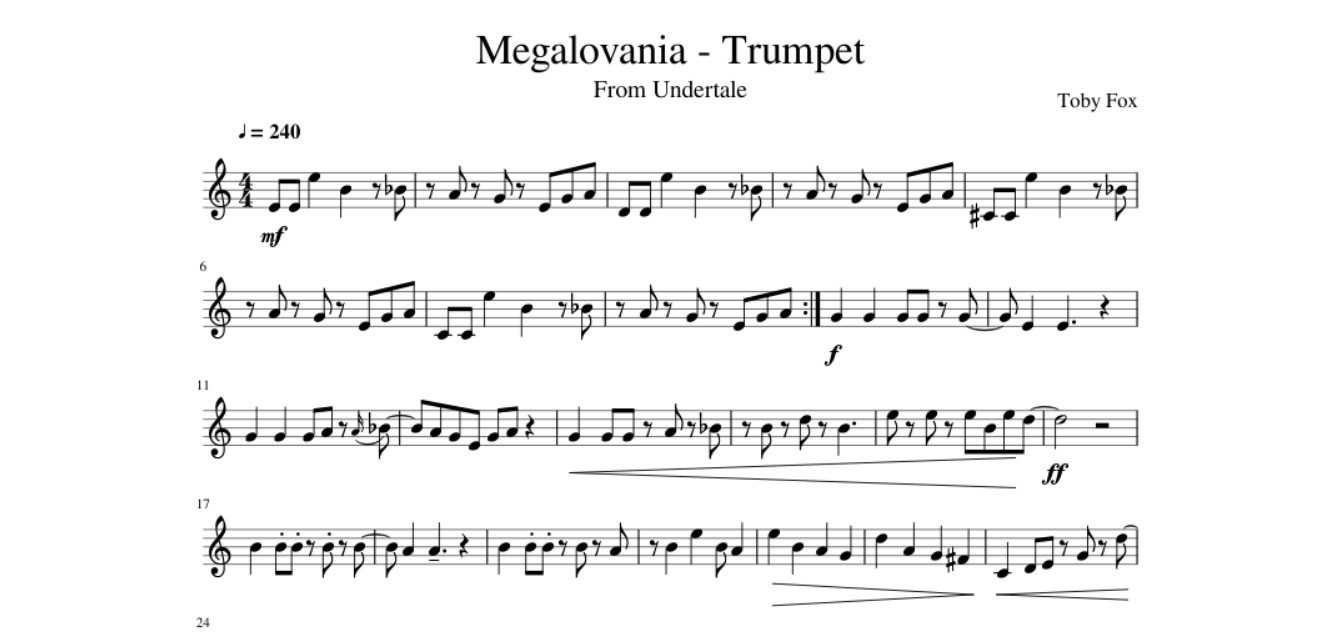

Sheet Music
How To Read Sheet Music Trumpet
Modified: January 28, 2024
Learn how to read sheet music for trumpet and improve your musical skills. Explore different sheet music options for trumpet players.
(Many of the links in this article redirect to a specific reviewed product. Your purchase of these products through affiliate links helps to generate commission for AudioLover.com, at no extra cost. Learn more)
Table of Contents
Introduction
Welcome to the world of sheet music! If you’re a trumpet player looking to expand your musical horizons or just starting your journey in the realm of music notation, this guide is for you. Understanding how to read sheet music is an essential skill for any musician, and it opens up a treasure trove of musical possibilities.
Sheet music is like a roadmap that guides you through a musical composition. It allows you to accurately play melodies, chords, and rhythms written by composers. By learning how to read sheet music, you gain the ability to perform a wide range of musical styles and genres.
In this article, we will demystify the process of reading sheet music specifically for the trumpet. We’ll cover the fundamentals of sheet music notation, including the staff, clefs, notes, key signatures, time signatures, dynamics, articulations, and various other symbols commonly found in trumpet sheet music.
Whether you’re a beginner or an intermediate trumpet player, this guide will equip you with the knowledge and skills needed to confidently interpret and perform sheet music. So, let’s dive in and explore the world of sheet music for the trumpet!
Understanding the Staff
The staff is one of the foundational elements of sheet music notation. It consists of five horizontal lines and four spaces, on which notes and musical symbols are placed. The staff acts as a visual reference for indicating the pitch of the musical notes.
The lines and spaces of the staff each represent a specific note. The bottom line of the staff represents an E, and the notes ascend alphabetically with each line or space moving up the staff.
It’s important to note that the trumpet is a transposing instrument, which means the written music is not in the same key as the sounding pitch. The trumpet is a B-flat instrument, so when you see a C written on the sheet music, it will sound as a B-flat when played on the trumpet.
To indicate the pitch of the notes precisely, additional vertical lines called ledger lines may be added above or below the staff. These lines extend the range of the staff to accommodate higher or lower notes.
The staff is divided by a vertical line called a barline, which separates the music into measures or bars. Each measure contains a specific number of beats, determined by the time signature.
In addition to the staff, there are also other symbols that indicate various musical elements such as key signatures, time signatures, dynamics, and articulations. These symbols provide critical information to the musician, making the music more expressive and nuanced.
Now that we have a basic understanding of the staff, let’s explore the different clefs used in sheet music notation for the trumpet.
Learning the Clefs
In sheet music notation, different instruments use different clefs to indicate the range of the notes they can play. For the trumpet, the most common clef used is the treble clef, also known as the G clef.
The treble clef symbol is a stylized letter G that wraps around the second line of the staff. It indicates that the notes within its range will be played higher on the musical scale. As a trumpet player, you will primarily read music written in the treble clef.
When reading sheet music in the treble clef, it’s important to familiarize yourself with the notes placed on each line and space. The lines of the treble clef, from bottom to top, represent the notes E, G, B, D, and F. The spaces, from bottom to top, represent the notes F, A, C, and E.
Occasionally, you may come across trumpet sheet music written in bass clef or even a combination of treble and bass clefs. While it’s less common for the trumpet, it’s still beneficial to have a basic understanding of these clefs to broaden your musical knowledge and be prepared for different musical situations.
The bass clef, also known as the F clef, is predominantly used by instruments that produce lower pitches, such as the trombone or tuba. It is characterized by a stylized letter F that wraps around the fourth line of the staff. The notes within its range sound lower on the musical scale.
If you encounter sheet music written in both treble and bass clefs, it’s important to pay attention to the instrument switch indicated in the music. In these instances, you may need to transpose the written notes to the appropriate pitch for the trumpet.
By familiarizing yourself with the treble clef and having a basic understanding of the bass clef, you will be well-equipped to read sheet music for the trumpet and confidently navigate different musical scores.
Next, let’s dive into the fascinating world of identifying notes on the staff.
Identifying Notes
One of the fundamental skills in reading sheet music is being able to identify and understand the notes written on the staff. Each note represents a specific pitch, and knowing how to interpret them is essential for playing the correct melody on the trumpet.
The placement of a note on the staff indicates its pitch. The higher the note is positioned on the staff, the higher the pitch it represents. Conversely, lower notes are positioned lower on the staff.
When it comes to identifying notes on the staff, it’s important to remember the musical alphabet. The musical alphabet consists of the letters A through G, which repeat in ascending order. This means that after the note G, the next note is A, and the pattern continues.
The notes on the lines of the treble clef staff, from bottom to top, are E, G, B, D, and F. To remember these notes, you can use mnemonic devices such as “Every Good Boy Deserves Fudge” or “Every Good Boy Does Fine.”
The notes in the spaces of the treble clef staff, from bottom to top, are F, A, C, and E. One popular mnemonic device for remembering these notes is “FACE.”
For trumpet players, it’s crucial to remember that the sounding pitch is different from the written pitch. As a B-flat instrument, when you see a written C on the sheet music, it will sound as a B-flat when played on the trumpet. This transposition is necessary to ensure that the correct notes are played in the appropriate key.
As you practice identifying notes on the staff, it can be helpful to use exercises and drills specifically designed for trumpet players. These exercises will train your eye to quickly recognize notes and improve your overall sight-reading abilities.
By mastering the skill of identifying notes on the staff, you will be able to read sheet music fluently and play melodies accurately on your trumpet. As we continue our journey through sheet music notation, let’s explore the significance of key signatures.
Recognizing Key Signatures
Key signatures play a crucial role in sheet music notation. They indicate the key in which a piece of music is written and provide important information about which notes are altered throughout the composition.
Key signatures are typically found at the beginning of a piece, right after the clef symbol. They consist of a series of sharps (#) or flats (b) placed on specific lines or spaces of the staff.
For trumpet players, it’s essential to understand key signatures as they directly impact the transposition of the written music to the sounding pitch on the instrument.
A sharp in the key signature indicates that the note on a specific line or space is played one half step higher than its original pitch. Flats, on the other hand, lower the pitch of a note by one half step.
Each key signature represents a particular major or minor key. Major keys are generally indicated by a combination of sharps and flats, while minor keys often have flat signatures.
When you come across a key signature in sheet music, take note of the sharps or flats present. By understanding the key signature and transposing accordingly, you can ensure that you are playing the correct notes on the trumpet.
It’s important to spend time practicing and memorizing the various key signatures. This will allow you to read and interpret sheet music more efficiently and accurately.
If you encounter a key signature that includes sharps, it can be helpful to use the phrase “Father Charles Goes Down And Ends Battle” to remember the order of the sharps: F, C, G, D, A, E, B. Each sharp adds a half step to the corresponding note when played.
For key signatures with flats, a useful mnemonic is “B E A D God Bless Every African” to remember the order of flats: B, E, A, D, G, C, F. Each flat lowers the corresponding note by a half step.
By recognizing key signatures and understanding their impact on transposition, you will be able to accurately play the trumpet parts written in different keys, expanding your repertoire and musical versatility.
As we delve deeper into the world of sheet music, let’s explore the role of time signatures in guiding rhythm and tempo.
Understanding Time Signatures
Time signatures provide important information about the rhythm and tempo of a piece of music. They consist of two numbers written at the beginning of a staff, just after the clef and key signature.
The top number of a time signature indicates the number of beats in each measure, while the bottom number represents the type of note that receives one beat. For example, in a 4/4 time signature, there are four beats in every measure, and a quarter note receives one beat.
The most common time signature in sheet music is 4/4, also known as common time. This means that there are four beats in each measure, and a quarter note receives one beat. It is often indicated by the symbol C.
Other common time signatures for trumpet music include 2/4 (two beats per measure), 3/4 (three beats per measure), and 6/8 (six beats per measure).
It’s important to understand how time signatures affect the rhythm of a composition. The number of beats in each measure and the type of note that receives one beat determine the overall pulse and feel of the music.
When reading sheet music, pay attention to the time signature at the beginning and keep the steady beat in mind as you play. It will help you maintain a consistent rhythm and ensure that you stay in sync with other musicians or accompaniment.
In addition to the time signature, sheet music may also contain tempo markings that indicate the speed at which a piece is meant to be played. These markings, such as “Andante” (a moderate tempo) or “Allegro” (a fast tempo), give further guidance on how to interpret the musical timing.
Understanding time signatures is essential for trumpet players to accurately execute rhythm patterns and maintain a steady tempo. By familiarizing yourself with different time signatures and practicing playing in various meters, you will become more confident in your ability to read and perform sheet music.
Now that we have a solid foundation in rhythm and tempo, let’s explore how dynamics can add expression and emotion to your musical performance.
Interpretation of Dynamics
Dynamics in sheet music refer to the varying levels of volume, intensity, and expression in a musical performance. They are indicated by specific symbols and terms that guide the musicians on how to play certain sections or phrases of a composition.
Dynamics add depth and emotion to a piece of music, allowing the performer to convey the intended mood and bring the composition to life.
There are several dynamic markings commonly used in sheet music, each with its own level of loudness or softness:
- pp (pianissimo) – very soft
- p (piano) – soft
- mp (mezzo-piano) – moderately soft
- mf (mezzo-forte) – moderately loud
- f (forte) – loud
- ff (fortissimo) – very loud
In addition to these basic dynamic markings, there are also more nuanced variations to indicate subtle changes in volume, such as crescendos (gradually getting louder) and diminuendos or decrescendos (gradually getting softer).
Interpreting dynamics in sheet music is a vital part of delivering a captivating and expressive performance on the trumpet. It is essential to analyze the music carefully and understand where the dynamic markings are placed.
By following the dynamics indicated in the sheet music, you can create contrast between different sections, highlight melodic phrases, and convey the intended emotions of the composition.
Keep in mind that dynamics are not limited to individual notes but can also apply to entire phrases or sections. It’s important to pay attention to the overall musical context and adjust your playing accordingly.
As you practice interpreting dynamics, experiment with different levels of intensity and volume. Take note of how changes in dynamics impact the overall feel of the music and the emotional message you convey to the audience.
Remember, dynamics are an essential element of musical expression, and by mastering their interpretation, you can elevate your trumpet playing and bring your performances to life.
Next, let’s delve into the importance of articulations in sheet music notation and how they affect the style of your trumpet playing.
Mastering Articulations
Articulations in sheet music notation play a vital role in shaping the style and character of your trumpet playing. They indicate how each note should be started, sustained, or ended, adding clarity and precision to your musical interpretation.
Articulations are represented by a variety of symbols and markings placed above or below the note. Here are some common articulations you may come across:
- Staccato – indicated by a dot placed above or below the note, it signifies that the note should be played short and detached.
- Legato – indicated by a curved line connecting two or more notes, it signifies that the notes should be played smoothly and connected.
- Accent – indicated by a sideways ‘V’ placed above or below the note, it signifies that the note should be played with emphasis or emphasis on the attack.
- Tonguing – indicated by the letters ‘T’ or ‘T+’, it signifies that the note should be played with the tongue touching the roof of the mouth.
- Slur – indicated by a curved line connecting two or more notes of different pitches, it signifies that the notes should be played smoothly without tonguing.
- Marcato – indicated by a vertical wedge (>) placed above or below the note, it signifies that the note should be played with a strong accent or marked emphasis.
Mastering articulations is crucial for expressing musical phrasing and adding nuance to your trumpet playing. They help you shape the rhythm, dynamics, and overall feel of a composition, enhancing its musicality and impact.
When practicing articulations, pay close attention to how each symbol or marking affects the sound and character of the note. Experiment with different tonguing techniques, note lengths, and levels of emphasis to fully explore the range of articulation possibilities.
It’s important to note that articulations are often combined with dynamics, such as playing a staccato note softly or an accentuated note loudly. This combination of elements contributes to a more nuanced and expressive performance.
As you become more proficient in mastering articulations, you will develop a greater sense of control over your trumpet playing. You will be able to bring out the intricacies of a piece of music and capture the essence of the composer’s intention.
Now that we’ve examined the foundational elements of sheet music notation, let’s explore some additional musical symbols that you may encounter in trumpet sheet music.
Reading Additional Musical Symbols
In addition to notes, key signatures, dynamics, and articulations, there are various other symbols and markings that you may come across in trumpet sheet music. These symbols provide additional instructions and enhance the overall interpretation of the music.
Here are some common musical symbols you should be familiar with:
- Fermata – indicated by a curve with a dot placed above a note, it signifies that the note should be held longer than its written value. The duration of the fermata is at the discretion of the performer or conductor.
- Repeat – indicated by double barlines with two dots, it signifies that the section of music between the repeat signs should be played again.
- Coda – indicated by a circle with a cross, it signifies that after reaching this symbol, you should skip to a specific section of the music indicated by another symbol.
- D.C. al Fine – an abbreviation for “Da Capo al Fine,” it means to go back to the beginning of the music and play until the Fine symbol, which indicates the end of the piece.
- D.S. al Coda – an abbreviation for “Dal Segno al Coda,” it means to go back to the symbol known as the “Segno” and play until the Coda symbol is reached, then skip to the Coda section.
- Pedal Tone – indicated by a horizontal line under a note, it signifies that the note should be sustained throughout as a repeated or held pitch.
- Tremolo – indicated by rapid slashes through a note, it signifies a quick alternation between that note and another note of the same pitch, creating a trembling effect.
These additional musical symbols provide specific instructions for how certain sections of the music should be played or navigated. They add depth, variety, and structure to your performance, ensuring accuracy and musicality.
As you encounter these symbols in your trumpet sheet music, take the time to familiarize yourself with their meanings and implications. Understand how they contribute to the overall flow and structure of the composition.
Remember that musical symbols are meant to guide and enhance your interpretation of the music. Use them as tools to bring out the nuances, dynamics, and expressive qualities of the piece you are playing.
By developing a comprehensive understanding of these additional symbols, you will be well-equipped to navigate through trumpet sheet music with confidence and deliver a captivating musical performance.
With a solid foundation in the essentials of sheet music notation and additional musical symbols, you are ready to explore advanced techniques in sheet music interpretation on the trumpet. Let’s dive into the next section.
Advanced Techniques for Sheet Music Interpretation
As you continue to advance in your trumpet playing and sheet music reading skills, there are various techniques and strategies you can employ to enhance your interpretation and performance.
Here are some advanced techniques to consider:
- Phrasing: Pay close attention to the natural phrasing of the music. Look for patterns, melodic arcs, and musical gestures that guide the flow of the composition. Use expressive techniques, such as dynamics, articulations, and subtle nuances, to highlight and shape these phrases.
- Expression: Go beyond the written instructions and express the emotion and character of the music. Connect with the piece on a deeper level and convey its intended mood through your tone, dynamics, and interpretation.
- Balance and Blend: When playing in an ensemble or with accompaniment, focus on achieving a balanced and blended sound. Listen to the other instruments or musicians and adjust your volume and tone accordingly to create a harmonious and cohesive performance.
- Tempo Flexibility: While adhering to the composer’s intended tempo is important, allow yourself some flexibility within the musical interpretation. Explore subtle variations in tempo and rubato to add expressiveness and bring out the emotional nuances of the music.
- Harmonic Awareness: Develop a keen awareness of the underlying harmonies in the music. Understand how different notes and phrases relate to the chord progressions, and use this knowledge to shape your phrasing and dynamics in a musically meaningful way.
- Improvise: Once you have a solid grasp of reading sheet music, delve into the realm of improvisation. Learn scales, arpeggios, and jazz patterns to explore your creativity and add your own musical voice to the music you play.
- Score Analysis: Take the time to analyze the entire composition beyond just your individual part. Understand how your part fits into the overall structure, theme, and development of the music. This will deepen your understanding of the piece and inform your interpretation.
These advanced techniques require a combination of technical mastery, musicality, and a deep understanding of the music you are performing. Continually strive to refine your skills and explore new ways to bring out the beauty and depth of the sheet music.
Remember, sheet music is meant to be a guide, but it is your interpretation and expression that truly bring it to life. Embrace your artistic freedom and find the balance between honoring the composer’s intentions and infusing your personal musicality into the performance.
By incorporating these advanced techniques into your trumpet playing and sheet music interpretation, you will elevate your musical performances and captivate your audience with compelling and engaging renditions.
As we conclude this exploration of sheet music interpretation on the trumpet, let’s recap the key points we’ve covered.
Conclusion
Congratulations! You have now gained a comprehensive understanding of how to read sheet music for the trumpet. This knowledge will empower you to confidently interpret and perform a wide range of musical compositions.
We began by exploring the fundamentals of sheet music, including the staff, clefs, and identifying notes. From there, we delved into key signatures, time signatures, dynamics, articulations, and other musical symbols that add depth and expression to your playing.
By mastering these foundational elements, you have developed a solid framework for reading and interpreting sheet music on the trumpet. You have learned how to navigate key signatures, follow tempo indications, and bring out the nuances of the music through dynamics and articulations.
As you continue your musical journey, remember to embrace advanced techniques such as phrasing, expression, and harmonic awareness. These skills will take your interpretation to the next level and allow you to truly convey the essence of the music.
Keep practicing and exploring new repertoire. Challenge yourself with different genres and musical styles to expand your musical horizons. And don’t forget to listen to and learn from experienced musicians to gain insight and inspiration.
Sheet music is your musical roadmap, and by embracing its notation and symbols, you can unlock a world of musical possibilities on the trumpet. Strive for technical accuracy, musicality, and a deep connection to the music you play.
With dedication, practice, and a passion for the trumpet, you will continue to grow as a musician and delight audiences with your captivating performances. So, keep exploring, keep playing, and enjoy the rich and rewarding journey of sheet music interpretation on the trumpet!



